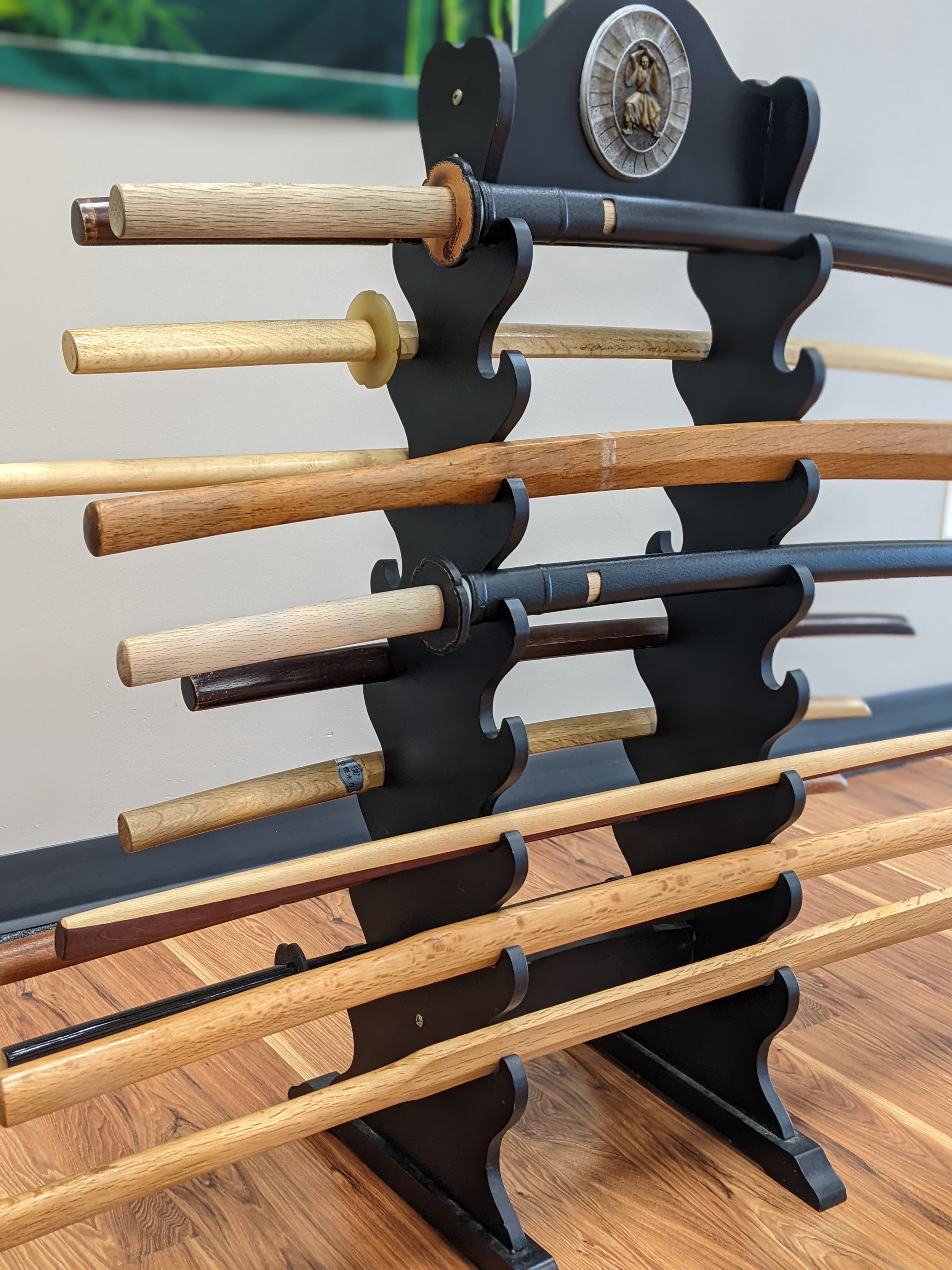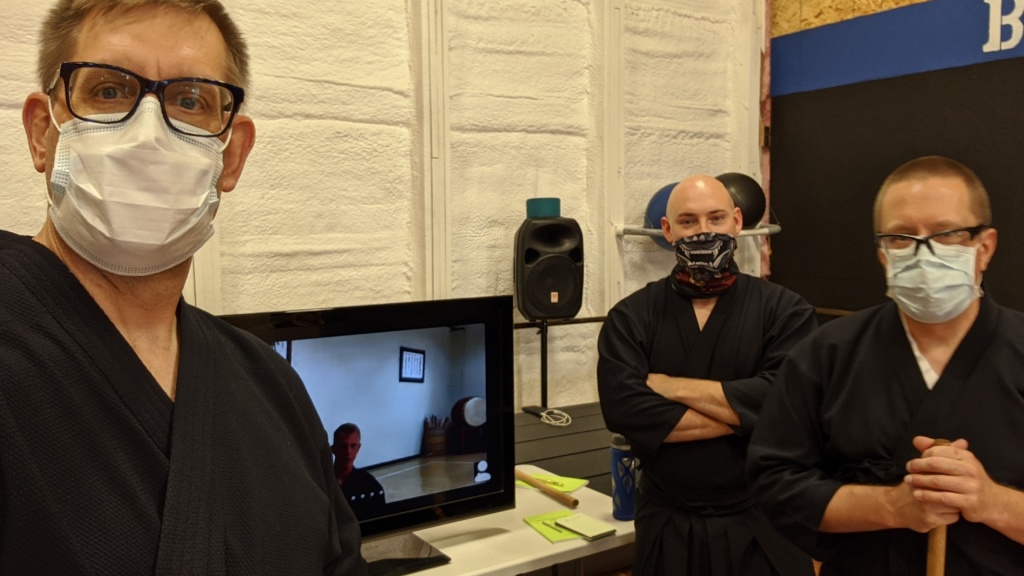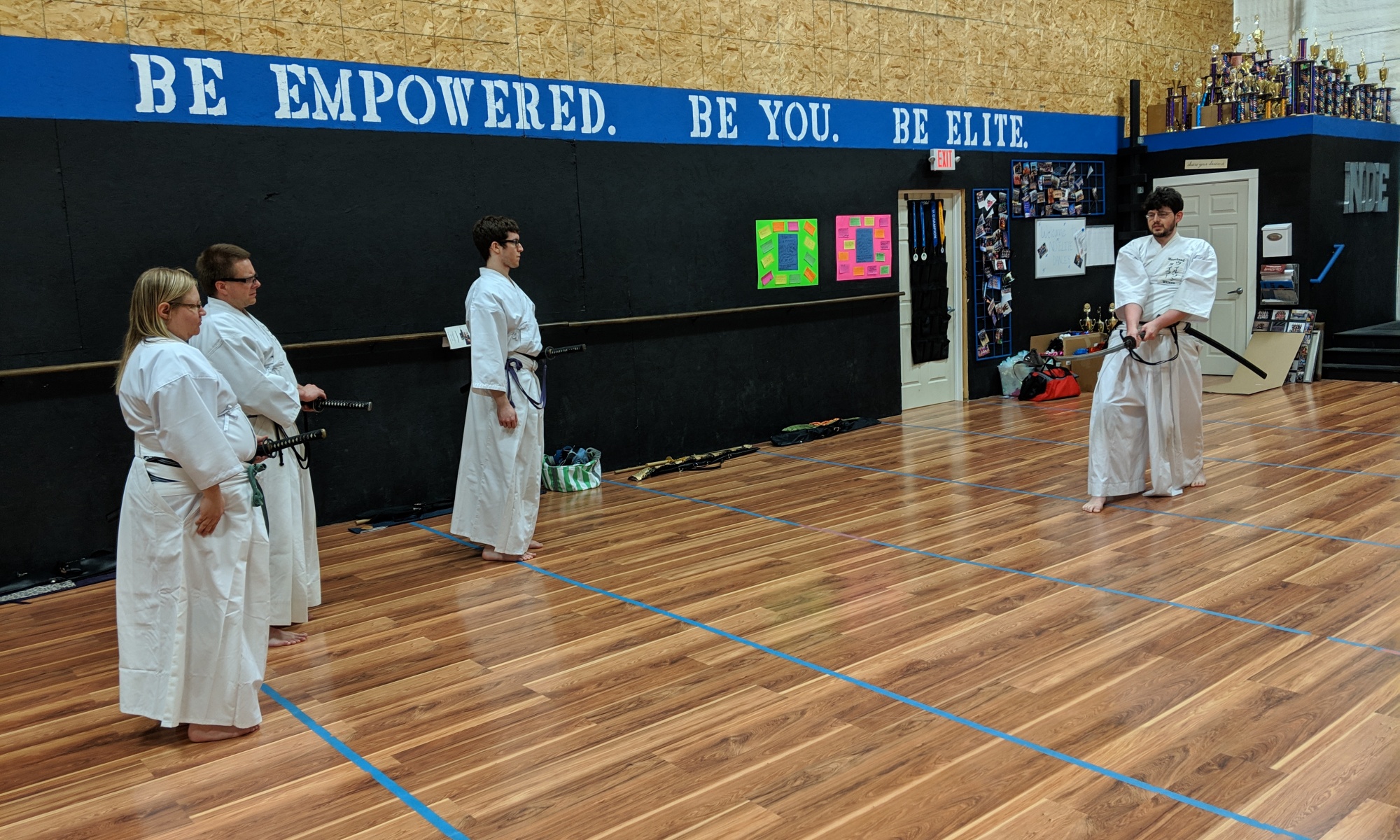I started kendo in 1996, as a “consolation” martial art for not being able to find Japanese swordsmanship iaido or kenjutsu in the city I was living in. I realize now that kendo was essential to starting my study of iaido and provided me with a great baseline for the kihon, concepts, and reishiki.
When I first arrived in Japan, my priorities were:
- Start to learn the language
- Find a dojo that teaches the sword
And that’s it.
Below are some excerpts from the diary I wrote when I arrived in Japan that fateful day in April 1996. Disclaimer: I was pretty young… ‘nuf said.
May 12, 1996
… I am still hoping very much that I will be able to study Kendo. This is one of the main reasons that I came here, unofficially of course. I have been practicing my Karate the last couple of days though, and feel better about that. I need to stay tuned. I really do miss my friends at the Dojo and the regular workouts.
May 27, 1996
… Went a touring on my bike today. Wow, the seat is short!! Found a martial arts shop that sells Kendo, karate, judo gear and after many sheets of paper, the owner called and talked to a Kendo sensei. I went to the BuDoKai center and again after using the dictionary and more paper, arranged lessons twice weekly starting on the first. I am totally psyched! The hakama’s they were are really sharp, and for about ¥1600 I can own one. The shinai is about ¥2000 and the lessons are ¥130 each! Finally I will be able to start. My student, Tadashi, is a police officer and said that he will introduce me to his sensei next Saturday evening. Maybe I can take it from two at once.
June 1, 1996
Today was my first Kendo lesson. I went to the BuDoKai and worked with my instructor for an hour on the formal seiza, “greeting procedure” before a match, and footwork. My arms were a bit sore after working with the bokken, but I will practice at home and become stronger as I progress. The footwork is difficult, because I keep wanting to step into a triangle stance. I have to keep my feet straight, and shorten my stance considerably. Again, time will take care of that. My instructor speaks very little English, so the lesson was completely in Japanese, and we did consult the dictionary quite a bit. He seems really nice, and presented me with a bokken as a gift to study at home.
During the afternoon, I went to the festival in the city down by Aeon. There were hundreds of booths on all of the side streets with many different things you can purchase. There was food, games, plants, clothing, even small chickens, live eels, and gold fish for sale. I sampled some of the local quisine again, but went for the crepe again for dessert. Many things to buy, so little money to spend.
I went to my first Kendo lesson at the Dojo that Tadashi took me to. The Sensei was very nice, and I met his family. The Dojo is very impressive. It is only two years old, and the floors are beautiful. There was a small kitchen/reception area where we had tea. We talked a bit before the lesson, and then I watched his class. The Sensei had his daughter work with me on footwork and striking. Again, it was difficult, but I felt very welcome there. I am looking forward to my next lesson there too.
June 8, 1996
Went to my Kendo class this a.m. and had fun. My foot (blister) was taped, so hopefully I will develop some calluses soon. I do get tired from swinging the bokken and shinai, but again, that is all part of the developing. My biggest fear is developing bad or incorrect habits and never re-learning correctly. My instructor, Mitsuru Nakasuji, is really patient and funny, and he laughs at my mistakes too. He is very supportive, and does say when I do it correctly, “Very good Bradley.” I found out he is a big San Francisco Braves fan, so I asked my mom to pick up a hat and mail it to me. He gave me a head band for a gift to use under my bogu gear. The kanji say Sim Sin Cho Wa, or heart, body, harmony. I think it’s really cool, and I plan to send one to Mike and Paul back at the dojo. Mitsuru refers to me as Ken Si, maybe student??
June 15, 1996
What a great day! It started with Mitsuru buying me lunch at the Dojo. I had some zaru soba, and some cha han. It was a nice lunch, and I really enjoyed talking to him about things other than Kendo. I told him I had a date that evening. He started giving me shit until I told him that she was taller than he is (about 165cm).
July 3, 1996
Things have been going pretty smoothly lately. I have been learning slowly at Kendo, and everyone says that I’m doing really good. I am “a very powerful Kendo player.”
November 2, 1996
Today, not so genki. I had kendo this morning, but my ki was weak. I had a really good practice yesterday, but today I couldn’t seem to get into the groove. I think that part of the problem is I can’t see well without my glasses, and I can’t wear glasses in the head-gear. Anyway, I couldn’t hit at all, and then I became very slow and frustrated. I am learning kata well, though, and I really enjoy that, but the idea is to learn something new. Mitsuru was a real help and gave me a little talk about how long he has been practicing, and that I shouldn’t be frustrated. I don’t want to let him down.
June 26, 1998
I am doing well, and very busy. I have been studying Japanese at least once a week in class, and have recently started Kendo again here. It has been a lot of fun to resume again, and my feet are finally starting to get back into shape with some callouses on the bottoms. I’ve suffered from the blister-on-blister problem for a few weeks now, and besides being painful, it makes it difficult to practice. My new sensei is very good (7th degree), and speaks a little English, so maybe I can learn more of the tradition and meaning behind the art, and not just the mechanics.
December 9, 1998 (Letter to my Grandpa)
I am still studying kendo. Kendo is Japanese sword fighting using a bamboo sword and protective gear where you score a hit on either the chest, head, or hand. It’s a lot of fun, and I think you knew that I got my black belt (shodan) last year. I am improving in that as well, but still have A LOT to learn. It’s also sometimes difficult trying to communicate with the sensei sometimes, but I seem to manage okay. Someday, I hope to buy a real samurai sword to bring home as a souvenir, but they’re rather expensive.
April 23, 2001
… We cut bamboo in my Iaido class last night. It was pretty fun, and my cutting is improving. I was a bit worried when I bent my Sensei’s sword though, but he straightened it and then bent it himself also. If you don’t cut correctly, you can easily bend or break your sword. No pressure. We have a demonstration this weekend before a kendo tournament, so I will do kata with the rest of the group, and then 3 of the higher students will do cutting again. It should be fun and my first “public” performance.
I transitioned from kendo to iaido around 1999 when I moved from Toyama prefecture to Shizuoka prefecture. I started kendo, but when my back started to hurt and the movements became painful for me to do, I searched once again for kenjutsu or iaido, and was able to connect with Takeda sensei who did both kendo and iaido. I later found out that my pain was associated with a herniated back which chiropractic treatments has resolved.
I’d like to start kendo again, but it’s been hard due to the lack of local instructors being available. The closest club is Minnehaha in the Minneapolis area.
I never did take my 2dan test, and would consider myself a “rank beginner” again if I restart.
Funny story about Nakasuji sensei. I was totally incorrect in the conversation about his favorite baseball team. After further conversations I learned it wasn’t the Braves as his favorite team, it was the Giants. In my naivety, I assumed he meant the American team the San Francisco Giants, but of course he was referring to the most popular national Japanese team the Tokyo Giants. It was a bit of an awkward moment when I presented him with a SF Giants baseball cap as a present expecting a great “thank you” and it ended up a complete miscommunication and a somewhat awkward, yet grateful acceptance for the “gesture” behind the hat. I think he wore that hat for the rest of the day, and then I saw it on his desk in the Budokan every time I came in. I’m guessing it made for a great story about his “Gaijiin” student’s effort to present him with something special, and the mis-communication that followed. I laugh about it now remembering his face when I gave him the hat and he looked like, “Whaaaaaat??”
Natsukashiii ne!? Good times.
I miss both my sensei a lot. Takeda sensei is the 4th from the left on the front row.

















































